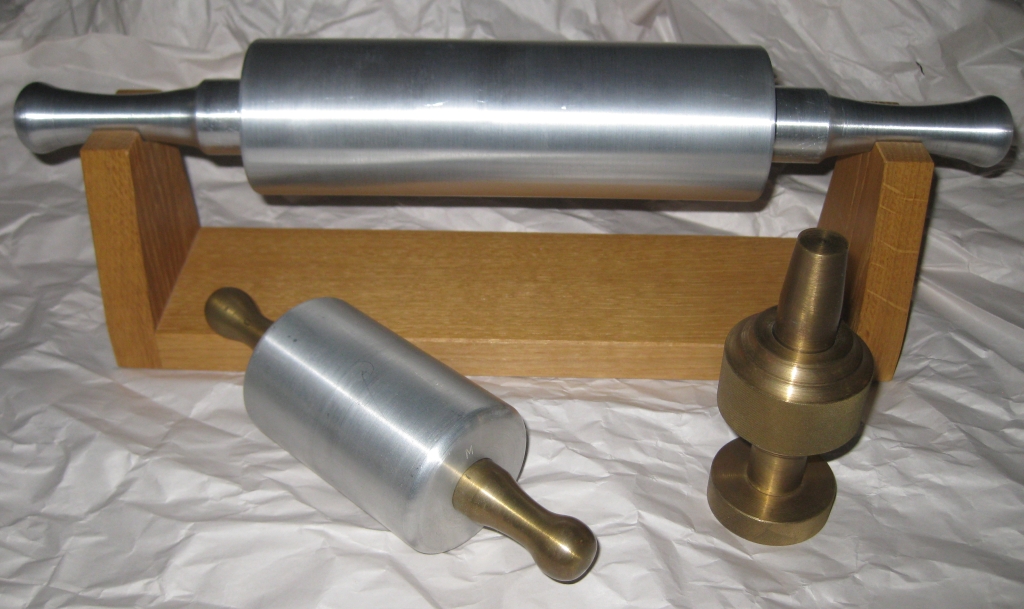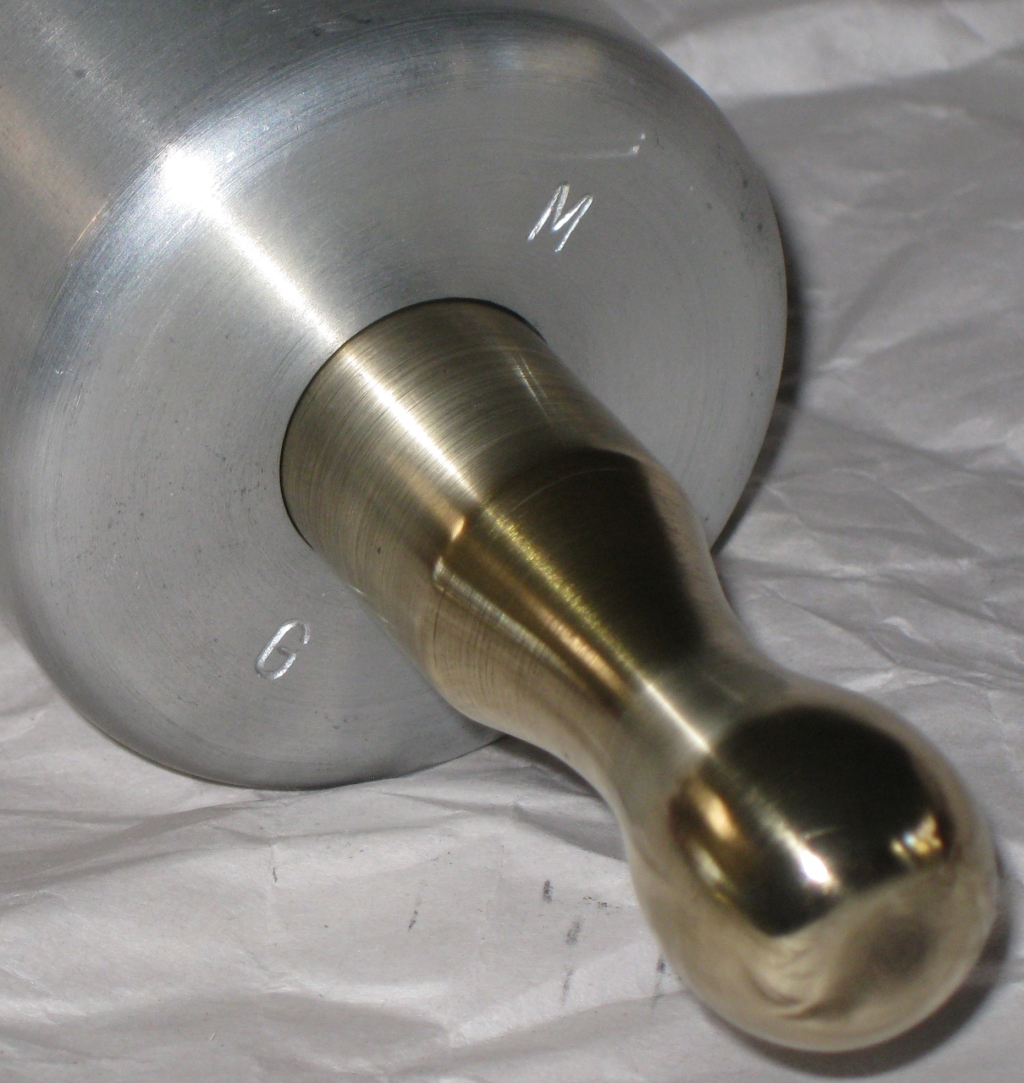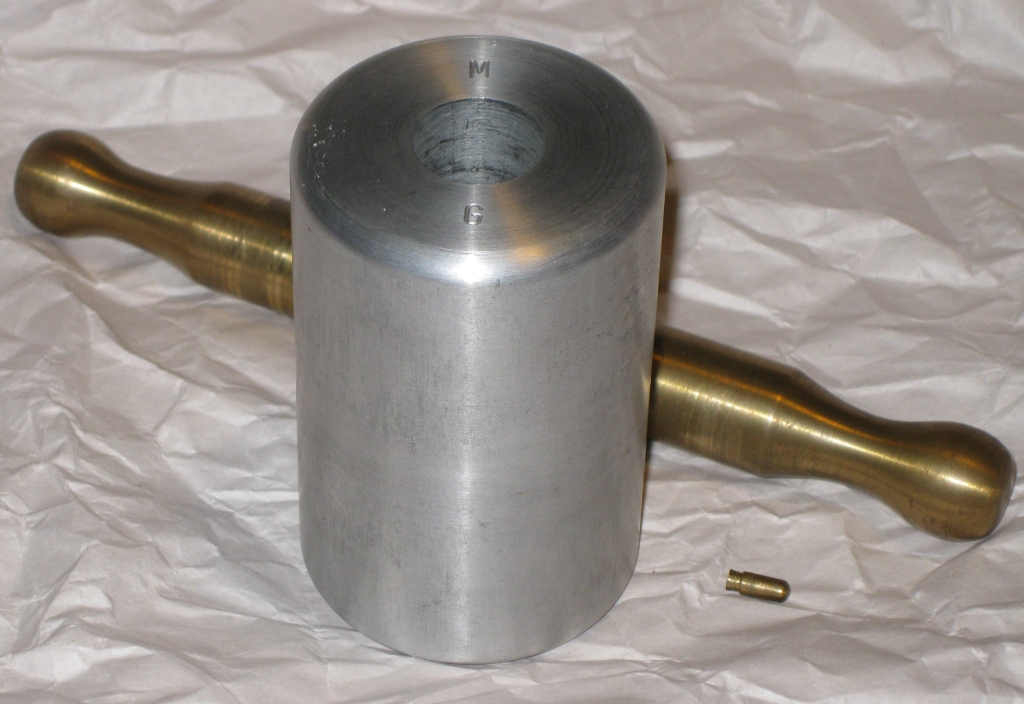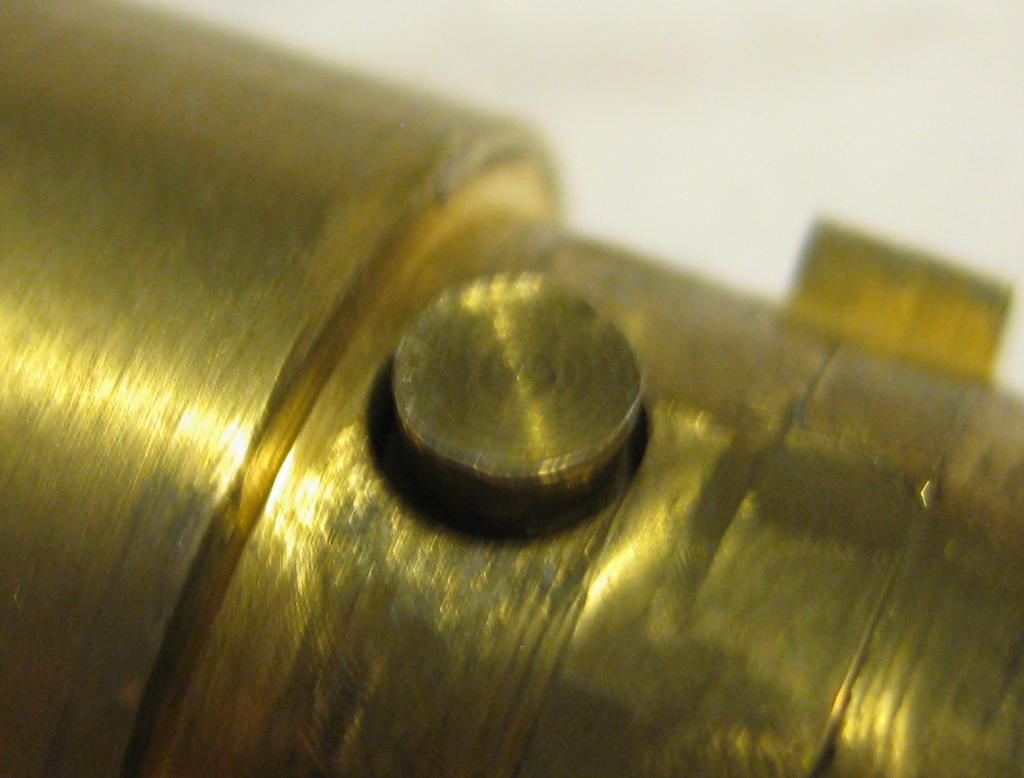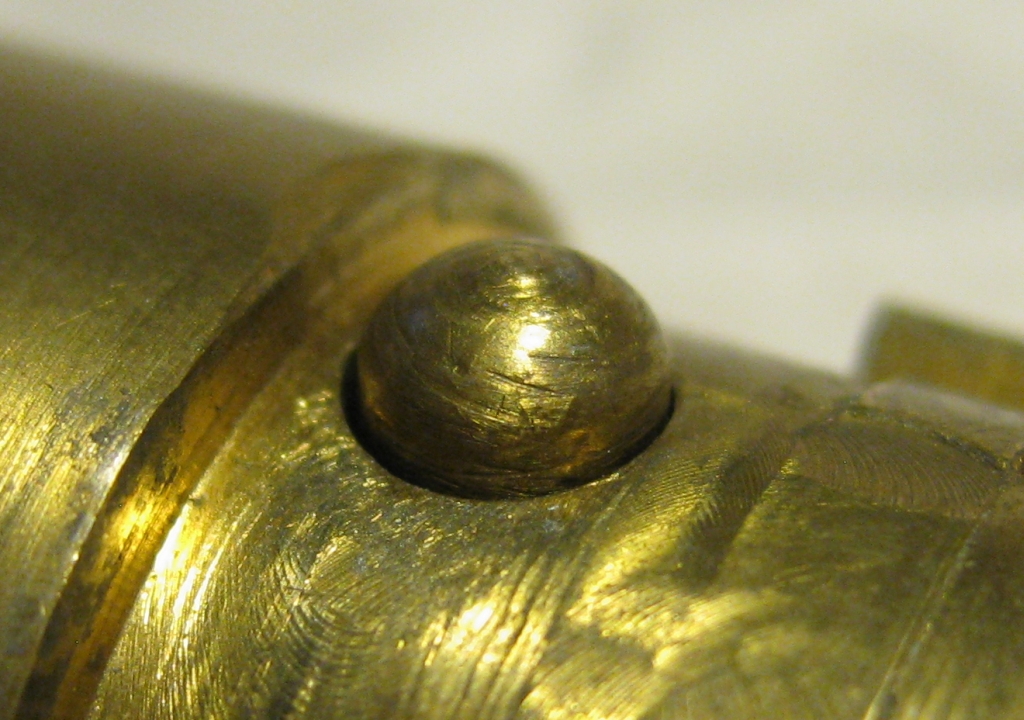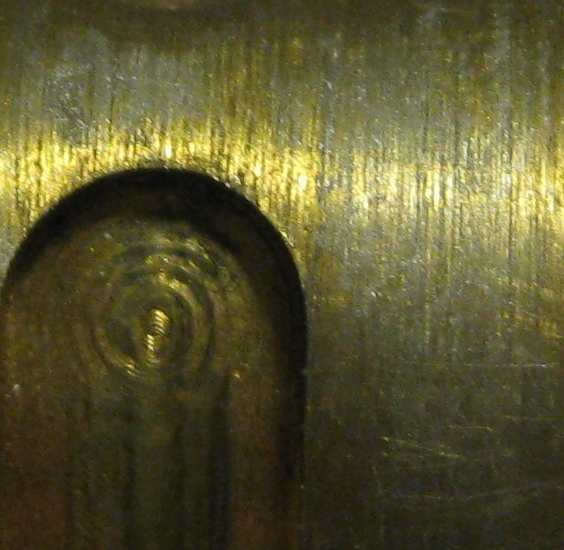- Marcel Gillen’s Rolling Pin
- Marcel Gillen’s Bolt #6
- Marcel Gillen’s Little Rolling Pin
In the final review in my series on Marcel Gillen’s hidden maze puzzles, I turn my attention to the small Rolling Pin. All of these puzzles are from pre-1994, and yet are still functioning perfectly, with no real signs of wear on the mazes. I’ve felt rather privileged to be able to spend time playing with these puzzles, understanding and unlocking their secrets, and have to say a huge thanks to Nick for having been able to borrow these from his collection.
By now the goal of the puzzle should be obvious. Remove the handle from the sleeve which forms the body of the rolling pin. There’s a hidden maze carved into the handle, and a sprung pin in the sleeve which you use to navigate the maze. All sounds simple, yet I found this the most challenging of the three puzzles, all thanks to a very clever feature that Marcel added to this puzzle; one which I’ve not come across before in this type of puzzle.
As you can see, the puzzle this time is made up of a brass handle, with an aluminium sleeve. Being significantly smaller than its big brother the rolling pin measures in at 7″ long, 2.75″ diameter around the sleeve, and 1.25″ around the handle. Weighing in at 930g it sits right in the middle of the three puzzles, although not by much compared to the bolt. The end of the sleeve is marked with Marcel’s signature ‘M G’.
When I started trying to solve this puzzle, I spent a lot of time going back and forth in the reset line making, quite honestly, no progress. As I’ve noted in the previous reviews, the puzzles are fairly straight forward to map as you can use the trap to map where the maze is; given that in all of these puzzles the pin rides atop the maze, and there are no walls to guide the pin. This proved only partially useful, as I was unable to find any way to get onto the maze.
Despite knowing better, I continued to repeat the same moves back and forth hoping for a different result, and at no point in my exploration did I find the ramp to enter the maze. Given my experience with this style of puzzle, I assumed that there was a gravity pin, or some other feature which was blocking the path to the ramp. (Ed: I should know better by now that to assume.) Trying different orientations of the puzzle didn’t help. For a short time I toyed with the thought that the puzzle may be broken. Given the craftsmanship of Marcel, this seemed unlikely, so the only option left was that I was missing something.
And of course I was. The trick Marcel used is so simple, yet so well ‘hidden’ that I completely missed it for far longer than I should have. Once I had found the entry to the maze, navigating it was reasonably straight forward, until I found something new, which I hadn’t been able to map previously. I have to commend Marcel on the design here. It’s a very simple idea, but works incredibly well.
Once you get to this new hidden section of the maze, you’ll be able to extend the handle further than was possible previously, and like the larger rolling pin, you’ll find a brass pin that can be removed. Unlike it’s larger brother, the pin this time has a flat end, and a rounded end, which is the key to taking the handle out of the sleeve.
When I finished solving the puzzle, and removed the core, the top of the maze was covered in a thin silver film. It seems like the issue I was having with the larger maze was also present in the smaller version. Although I didn’t end up with silver hands when solving it, the friction between the sleeve and core was causing the same effect on the surface of the maze.
I think this is my favorite of the three puzzles because of the unique feature used to enter the maze. There’s nothing overly complicated in there, but it is well executed, and requires the solver to not assume how the puzzle works. There’s a few puzzle designs out there which could learn a lot from the relative simplicity of these puzzles. Harder is not always better, and as is proven with these puzzles, added complexity isn’t needed. The more complex the mechanism, the more things can go wrong with it. Each of these puzzles still works every bit as well as it did when they were made, and I am sure will continue to do so for the next 20 years.
The amount of enjoyment I had from solving these puzzles is hard to measure, however the ‘aha’ moment in each of them is unquestionable, and each puts a smile on my face having solved them. If you get the chance to play with any of these, take it. You’ll not be disappointed.
